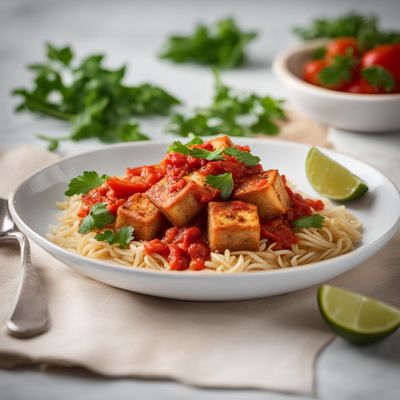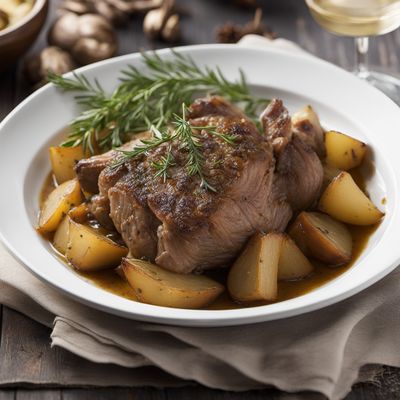
Recipe
Greek-style Paella
Mediterranean Delight: Greek-style Paella
4.8 out of 5
In the vibrant and flavorful world of Greek cuisine, we bring you a delightful twist on the classic Spanish dish, Paella. This Greek-style Paella combines the essence of Mediterranean flavors with a variety of fresh ingredients, creating a mouthwatering and aromatic dish that will transport you to the sunny shores of Greece.
Metadata
Preparation time
20 minutes
Cooking time
30 minutes
Total time
50 minutes
Yields
4 servings
Preparation difficulty
Medium
Suitable for
Mediterranean diet, Vegetarian (omit Greek sausages), Gluten-free, Nut-free, Egg-free
Allergens
Dairy (feta cheese), Gluten (if using Greek sausages with gluten)
Not suitable for
Vegan, Dairy-free, Paleo, Low-carb, Keto
Ingredients
While the Spanish Paella traditionally uses saffron and chorizo, this Greek adaptation replaces them with fragrant herbs like oregano and thyme, and incorporates Greek sausage, feta cheese, and olives for a distinct Mediterranean touch. The result is a harmonious blend of flavors that pays homage to both Spanish and Greek culinary traditions. We alse have the original recipe for Paella, so you can check it out.
-
2 cups (400g) Arborio rice 2 cups (400g) Arborio rice
-
4 cups (950ml) vegetable broth 4 cups (950ml) vegetable broth
-
1 onion, diced 1 onion, diced
-
3 cloves of garlic, minced 3 cloves of garlic, minced
-
1 red bell pepper, sliced 1 red bell pepper, sliced
-
1 yellow bell pepper, sliced 1 yellow bell pepper, sliced
-
1 zucchini, sliced 1 zucchini, sliced
-
1 cup (200g) cherry tomatoes, halved 1 cup (200g) cherry tomatoes, halved
-
1 cup (150g) Kalamata olives 1 cup (150g) Kalamata olives
-
1 cup (150g) crumbled feta cheese 1 cup (150g) crumbled feta cheese
-
4 Greek sausages, sliced 4 Greek sausages, sliced
-
2 tablespoons olive oil 2 tablespoons olive oil
-
1 teaspoon dried oregano 1 teaspoon dried oregano
-
1 teaspoon dried thyme 1 teaspoon dried thyme
-
Salt and pepper to taste Salt and pepper to taste
-
Lemon wedges, for serving Lemon wedges, for serving
-
Fresh parsley, for garnish Fresh parsley, for garnish
Nutrition
- Calories (kcal / KJ): 450 kcal / 1880 KJ
- Fat: 15g (7g saturated)
- Carbohydrates: 60g (5g sugars)
- Protein: 18g
- Fiber: 5g
- Salt: 1.5g
Preparation
-
1.Heat olive oil in a large paella pan or skillet over medium heat.
-
2.Add the diced onion and minced garlic, and sauté until translucent.
-
3.Add the sliced bell peppers and zucchini, and cook until slightly softened.
-
4.Push the vegetables to one side of the pan and add the sliced Greek sausages. Cook until browned.
-
5.Stir in the Arborio rice, dried oregano, and dried thyme. Toast the rice for a minute to enhance its flavor.
-
6.Pour in the vegetable broth and bring to a simmer. Season with salt and pepper to taste.
-
7.Reduce the heat to low and let the rice cook for about 15-20 minutes, or until the liquid is absorbed and the rice is tender.
-
8.Gently stir in the cherry tomatoes, Kalamata olives, and crumbled feta cheese.
-
9.Remove from heat and let the paella rest for a few minutes.
-
10.Serve the Greek-style Paella hot, garnished with fresh parsley and accompanied by lemon wedges for squeezing over the dish.
Treat your ingredients with care...
- Arborio rice — Rinse the rice before cooking to remove excess starch and achieve a fluffier texture.
- Greek sausages — If Greek sausages are not available, you can substitute with any other flavorful sausage of your choice.
- Kalamata olives — Pit the olives before adding them to the paella to avoid any unwanted surprises while enjoying the dish.
- Feta cheese — Crumble the feta cheese just before adding it to the paella to preserve its texture and prevent it from melting too much.
- Lemon wedges — Squeeze fresh lemon juice over the paella just before serving to add a refreshing citrusy flavor.
Tips & Tricks
- For a smoky flavor, you can grill the bell peppers and zucchini before adding them to the paella.
- To enhance the aroma, toast the dried oregano and thyme in a dry pan for a minute before adding them to the dish.
- If you prefer a spicier paella, add a pinch of red pepper flakes or a dash of hot sauce to the vegetable broth.
- Allow the paella to rest for a few minutes after cooking to allow the flavors to meld together.
- Leftover paella can be refrigerated and enjoyed the next day. Simply reheat it gently in a pan or microwave, adding a splash of vegetable broth if needed to moisten the rice.
Serving advice
Serve the Greek-style Paella as a main course, accompanied by a fresh Greek salad and crusty bread. It is also delicious on its own, with the vibrant flavors and textures taking center stage.
Presentation advice
Present the Greek-style Paella in the paella pan or a large serving dish, allowing the vibrant colors of the vegetables and the golden hues of the rice to shine through. Garnish with fresh parsley for a pop of green and serve with lemon wedges on the side for an inviting touch.
More recipes...
More Spanish cuisine dishes » Browse all

Almendrados
Almendrados are a traditional Spanish cookie that is made with almonds and sugar.

Bocadillo de queso
Cheese Sandwich
Bocadillo de queso is a simple and delicious Spanish sandwich that is made with cheese and bread. This dish is a great option for vegetarians or...

Obleas
Wafer
Obleas are a traditional dessert from Latin America. They are thin, crispy wafers that are filled with a sweet filling, such as dulce de leche or jam.
More Greek cuisine dishes » Browse all

Pitarakia
Pitarakia is a traditional Greek pastry made with phyllo dough and feta cheese. It is a popular snack in Greece and is often served with tzatziki...

Kokkinisto
Kokkinisto is a traditional Greek stew made with beef or lamb and a rich tomato sauce. It is a hearty and flavorful dish that is perfect for cold...

Yemista
Stuffed Vegetables
Yemista is a Greek dish made from stuffed vegetables.









